
The Sopwith Pup is a British single-seater biplane fighter aircraft built by the Sopwith Aviation Company. It entered service with the Royal Naval Air Service and the Royal Flying Corps in the autumn of 1916. With pleasant flying characteristics and good manoeuvrability, the aircraft proved very successful. The Pup was eventually outclassed by newer German fighters, but it was not completely replaced on the Western Front until the end of 1917. Remaining Pups were relegated to Home Defence and training units. The Pup's docile flying characteristics also made it ideal for use in aircraft carrier deck landing and takeoff experiments and training.

The Sopwith 7F.1 Snipe was a British single-seat biplane fighter of the Royal Air Force (RAF). It was designed and built by the Sopwith Aviation Company during the First World War, and came into squadron service a few weeks before the end of the conflict, in late 1918.

The Fairey Aviation Company Fairey III was a family of British reconnaissance biplanes that enjoyed a very long production and service history in both landplane and seaplane variants. First flying on 14 September 1917, examples were still in use during the Second World War.

The Sopwith Tabloid and Sopwith Schneider (floatplane) were British biplanes, originally designed as sports aircraft and later adapted for military use. They were among the first successful types to be built by the Sopwith Aviation Company. The "Tabloid", so named because of its small size, caused a sensation when it made its first public appearance.

The Hawker Woodcock was a British single-seat fighter built by the Hawker Engineering Company as the first fighter to be produced by Hawker Engineering. It was used by the RAF as a night fighter in the 1920s.
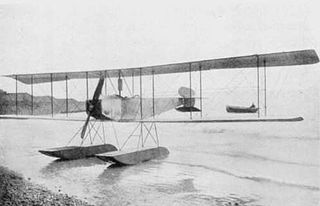
The Avro Type H, Type 501, and Type 503 were a family of early British military seaplanes. They were a development of the Avro 500 design and were originally conceived of as amphibious, the prototype being fitted with a single large main float under the fuselage, and two outrigger floats under the wings.
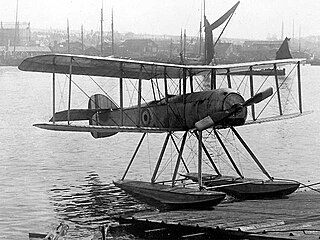
The Wight Baby was a British single-seat seaplane fighter produced by John Samuel White & Company Limited. Only three prototype aircraft were built.
The Short Admiralty Type 74 was a single-engined biplane tractor seaplane with non-folding wings, which saw service with the Royal Naval Air Service during the First World War.

The Bristol T.B.8, or Bristol-Coanda T.B.8 was an early British biplane built by the Bristol Aeroplane Company and designed by the Romanian Henri Coandă. Fifty four Bristol T.B.8s were built, being mainly used as a trainer. A small number of Bristol T.B.8s were briefly used as bombers at the start of the World War I by the Royal Naval Air Service.
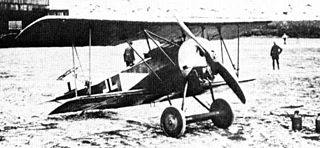
The Fokker D.VI was a German fighter aircraft built in limited numbers at the end of World War I. The D.VI served in the German and Austro-Hungarian air services.
The Pemberton-Billing P.B.25 was a First World War British single-seat scout aircraft built by Pemberton-Billing Limited, later Supermarine Aviation Works Limited.

The Supermarine Seal II was a British flying boat developed by Supermarine after it secured a British Air Ministry order for a prototype three-seater fleet spotter amphibian. The prototype, which had to be capable of landing on Royal Air Force (RAF) aircraft carriers, was designed by Supermarine's R.J. Mitchell, who incorporated suggestions made after the Supermarine Commercial Amphibian achieved second place after it was entered for an Air Ministry competition in 1920.

The FBA Type A and the similar Type B and C were a family of reconnaissance flying boats produced in France prior to and during World War I.
The Sopwith Admiralty Type 807 was a 1910s British biplane seaplane designed and built for the Admiralty by the Sopwith Aviation Company.
The Sopwith Two-Seat Scout was a 1910s British biplane Anti-Zeppelin scout biplane designed and built for the Admiralty by the Sopwith Aviation Company. It was nicknamed the Spinning Jenny due to a tendency to enter a spin.

The Vickers E.F.B.7 was a prototype British fighter aircraft of the First World War. A twin-engined biplane, the E.F.B.7 was unsuccessful, only one being built.

The Sopwith Three-seater was a British aircraft designed and built prior to the start of the First World War. One of the first aircraft built by the Sopwith Aviation Company, it was operated by both the Royal Naval Air Service (RNAS) and the Royal Flying Corps (RFC), being used briefly over Belgium by the RNAS following the start of the War.
The Short S.45 — also known as the Short T.5 after its naval serial number — was a training biplane built for Britain's Royal Navy by Short Brothers in 1912. It was the forerunner of another three identical aircraft delivered to the Royal Navy and Royal Flying Corps during 1912 and 1913. The Royal Naval Air Service was still operating the type when World War I broke out in 1914.
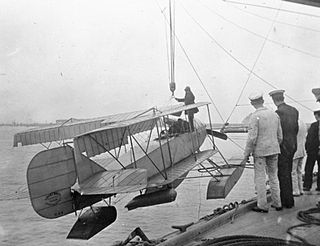
The Short Admiralty Type 81 was a series of British two-seat floatplanes built prior to the First World War, and used by the Royal Naval Air Service in the early years of the war. They were powered by 160 hp (120 kW) Gnome Lambda-Lambda 14 cylinder two-row rotary engines and had folding wings to aid storage on ship, hence the popular name Short Folder, shared with a number of other seaplanes made by Short Brothers.
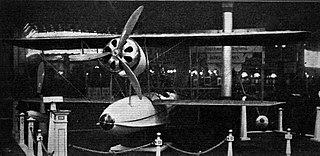
The Pemberton-Billing P.B.1, sometimes known as the Supermarine, was a 1910s British single-seat flying-boat built by Pemberton-Billing Limited, which later became the Supermarine Aviation Works. Only one P.B.1 was built, and it never flew any distance further than a hop.















